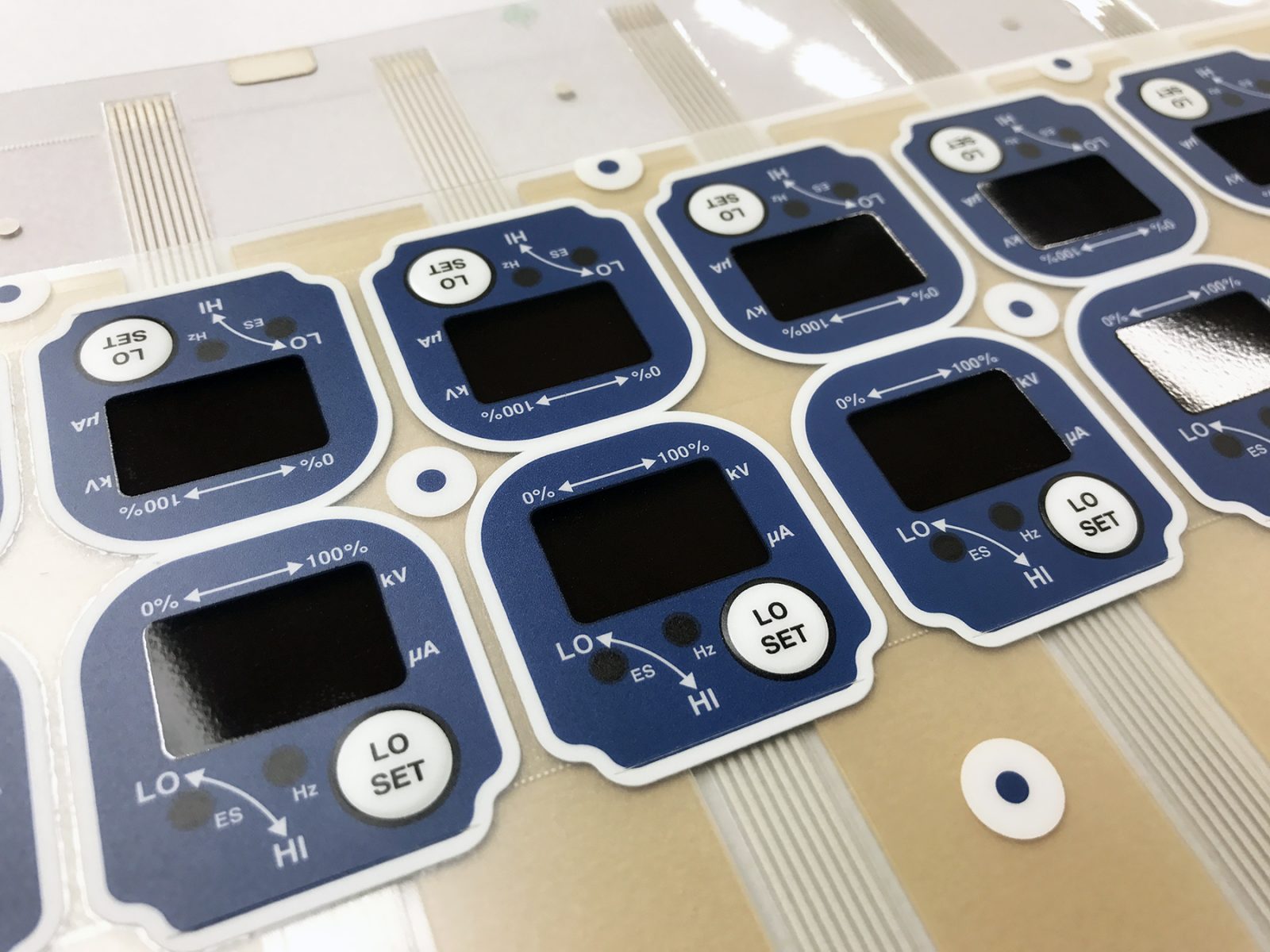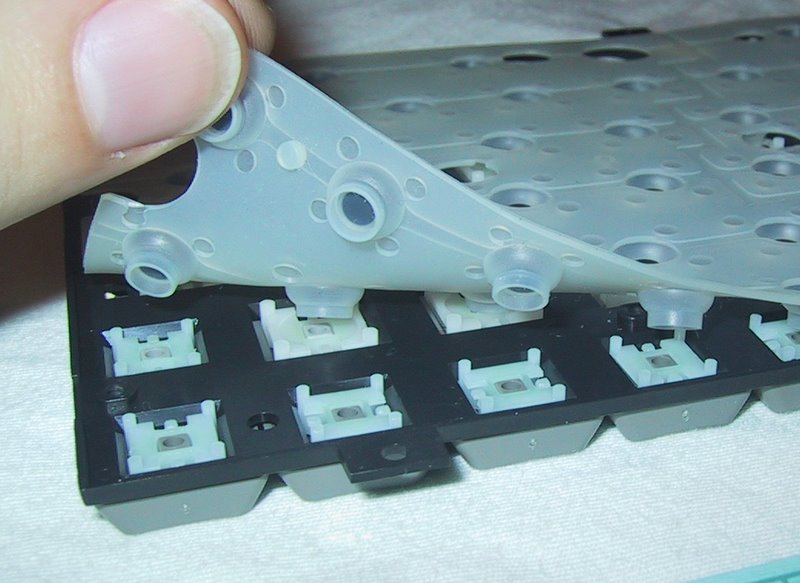Everything About Membrane Switch: Understanding Its Layout and Capability
When you believe regarding the control user interfaces in contemporary tools, membrane layer buttons usually come to mind. These elements are extra than just switches; they blend layout and performance effortlessly. Understanding exactly how they work and what makes them efficient can change your perspective on daily electronic devices. There are subtleties to their design and efficiency that you might not be conscious of. Allow's explore what sets membrane layer changes aside from various other control systems.
What Are Membrane Buttons?

Their smooth nature makes them simple to clean and resistant to dust and dampness, a vital attribute in several environments. Membrane layer switches can also be personalized concerning shape, size, and graphics, enabling producers to develop unique user interfaces tailored to specific items. Plus, they're light-weight and thin, which aids in reducing the overall bulk of tools. Generally, membrane layer buttons play a significant function in enhancing individual experience throughout a vast range of applications.
Just How Membrane Layer Switches Work
When you press a trick on a membrane layer switch, it turns on a straightforward yet reliable device. membrane switch manufacturer. The top layer, commonly made of flexible material, pushes down onto a conductive layer beneath it.
You'll discover that the tactile responses differs based upon the button layout, supplying either a soft click or an extra pronounced action. When you release the key, the membrane layer go back to its initial position, resuming the circuit and stopping the signal. This process takes place nearly immediately, making sure a responsive individual experience.
Membrane layer switches are popular as a result of their longevity and resistance to dirt and dampness, making them optimal for various applications, from home home appliances to medical tools. Understanding this operation assists you appreciate their widespread usage.
Trick Elements of Membrane Buttons
Comprehending the key elements of membrane layer switches is basic for understanding their functionality and layout. At the core, you'll locate the visuals overlay, which gives the aesthetic user interface for users. Below that, there's a spacer layer that divides the circuit layers, making sure that they don't make get in touch with up until pushed. The circuit layer is where the magic occurs; it contains conductive traces that complete the circuit when you push the switch. Another important component is the glue backing, allowing the button to abide by surface areas safely. Lastly, the protective layer shields versus environmental factors and wear, prolonging the button's life expectancy. Each element plays a significant role in making sure reputable performance and user communication. By comprehending these components, you'll get understanding right into just how membrane switches operate and their importance in different applications.
Materials Used in Membrane Switch Over Style
The efficiency and resilience of membrane layer switches greatly rely on the materials made use of in their layout. You usually encounter polyester and polycarbonate as primary substrates because of their outstanding stamina and versatility. These materials resist scrapes and chemicals, making them ideal for requiring environments.
The conductive layers usually utilize silver or carbon, picked for their reliability and conductivity. membrane switch manufacturer. Silver offers remarkable efficiency, while carbon is a cost-efficient alternative. For the overlay, you could consider a matte or glossy surface, depending on your visual demands and user experience
Adhesives play an essential function as well; they bond layers securely and assure longevity. Make sure to select adhesives that stand up to environmental factors like temperature and humidity. Don't ignore the relevance of an excellent printing technique for graphics, as it boosts both use this link performance and aesthetic appeal. Selecting the best products will guarantee your membrane switch stands the examination of time.
Design Factors To Consider for Membrane Switches
While developing membrane layer switches, it's important to take into account numerous aspects that influence their performance and user experience. Beginning by focusing on the format and button dimension; make specific they're user-friendly and easy to browse.
Don't forget the visuals style; clear labeling and shade contrast are substantial for presence. Verify your layout fits environmental variables, like wetness or temperature level variations, which could affect efficiency. Finally, remember the importance of testing models with real customers to collect responses and make necessary changes. This repetitive process assists you improve the layout, confirming it meets both practical and visual needs efficiently. By carefully thinking about these components, you'll develop a membrane layer switch that improves use and complete satisfaction.
Applications of Membrane Layer Buttons
Membrane layer switches are versatile components found in different applications, from commercial devices to customer electronics. You'll see their impact in devices that call for durable interfaces and in gadgets that gain from sleek designs. Comprehending these applications assists you appreciate the functionality and usefulness of membrane layer switches in everyday modern technology.
Industrial Devices Usage
When you're looking to boost the functionality of commercial equipment, membrane layer buttons supply a trusted service that incorporates sturdiness with easy to use style. These switches are ideal for harsh settings, providing resistance to dirt, dampness, and chemicals. Welcome membrane switches to improve your operations and enhance general performance.
Consumer Electronic Devices Combination
In the domain name of customer electronic devices, membrane layer switches play a vital duty in boosting user communication and device capability. You'll locate them in gadgets like microwaves, remote controls, and pc gaming consoles, supplying a seamless way to connect with modern technology. Their smooth design enables for easy assimilation right into numerous products, making controls intuitive and easy to use. With their ability to include graphics and backlighting, you can delight in a contemporary aesthetic that enhances the device's total appearance. Membrane buttons additionally ensure toughness and resistance to dust and dampness, expanding the lifespan of your electronics. By choosing membrane layer buttons, you enhance not just the functionality but likewise the design of your devices, making daily interactions smooth and enjoyable.
Benefits and Downsides of Membrane Layer Buttons
While membrane buttons offer a variety of advantages, they additionally include some drawbacks that you must consider. One considerable advantage is their compact style, making them optimal for space-constrained applications. They're additionally cost-efficient, providing a resilient service with a low production expense. On top of that, their seamless surface area is simple to clean, enhancing hygiene in settings like health centers.

Nevertheless, there are downsides. Membrane address switches can have a much shorter life-span contrasted to mechanical buttons, especially under heavy use. They can likewise be much less responsive, which may affect customer feedback throughout operation. If damaged, fixing them can be tough and frequently requires complete replacement. Ultimately, their level of sensitivity to severe temperature levels and environmental problems might restrict their efficiency in specific setups. Balancing these benefits and drawbacks will certainly assist you determine if membrane switches are the appropriate suitable for your task.
Regularly Asked Inquiries
How Much Time Do Membrane Layer Switches Over Commonly Last?
Membrane switches generally last in between 5 to 10 years, depending on usage and ecological problems. You'll intend to review factors like wear, exposure to dampness, and temperature level fluctuations to gauge their longevity successfully.
Can Membrane Layer Changes Be Custom-made for Specific Designs?
Yes, you can personalize membrane buttons to fit specific styles (membrane switch manufacturer). You'll have the liberty to choose shades, forms, and layouts that match your project's requirements, guaranteeing they mix effortlessly with your general aesthetic
What Is the Price Array for Membrane Switch Over Manufacturing?
The cost array for membrane website here button production normally falls in between $1 and $10 each, depending on factors like design intricacy, amount, and materials. You can get quotes from producers to discover the very best option.

Are Membrane Layer Switches Water-proof or Resistant?
Membrane switches can be created to be waterproof or resistant, depending upon products made use of and building approaches. If you need them for wet environments, ensure you specify those demands during the design procedure.
How Do Membrane Layer Switches Over Contrast to Typical Switches?
Membrane layer buttons are generally thinner and extra flexible than traditional switches, providing a streamlined layout. They're usually much easier to clean up and integrate, but could not give the tactile comments you're utilized to with mechanical options.
Conclusion
